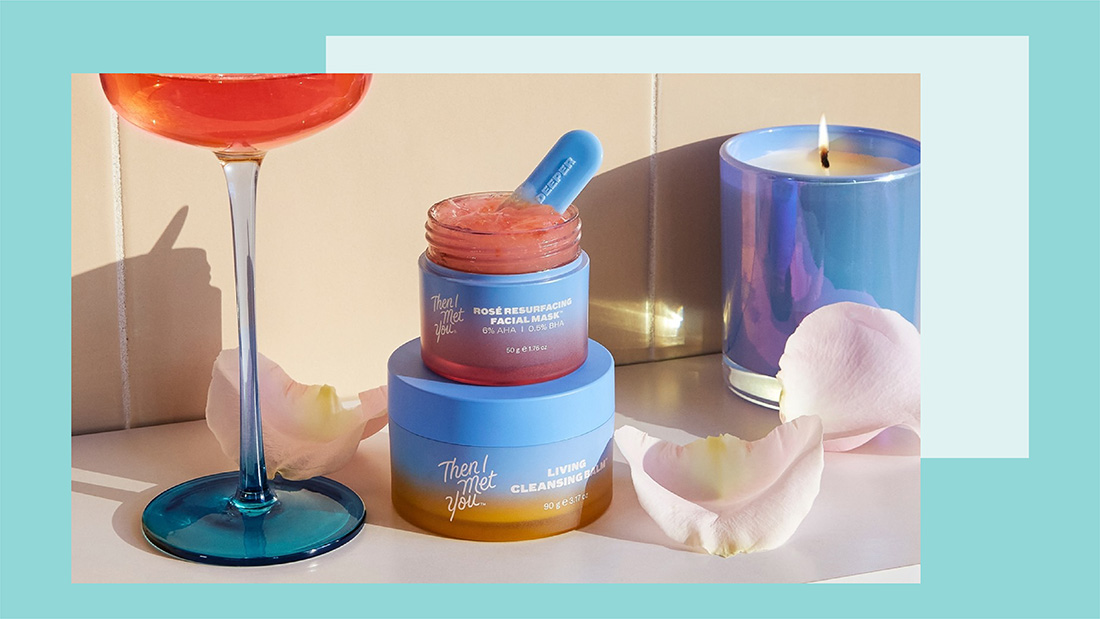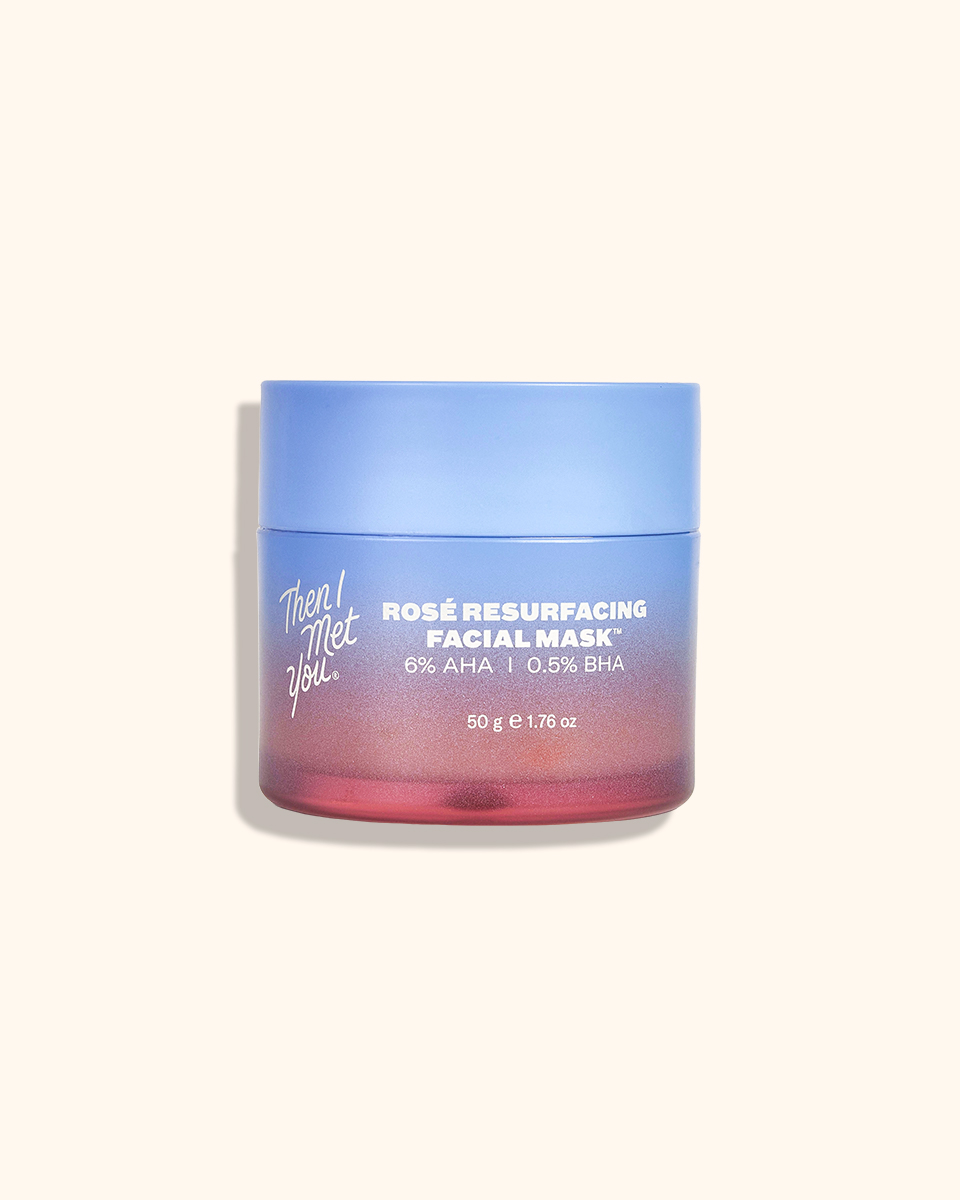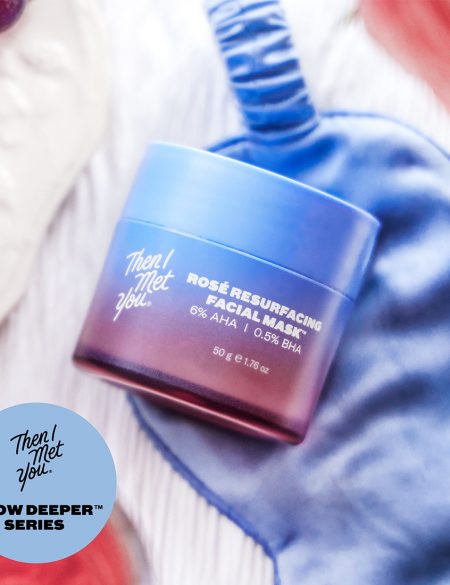Resurfaced skin is only fifteen minutes away!
Dull skin is no joke. Caused by a number of factors, which range from a compromised skin barrier to under exfoliation, this skin concern gets in between you and your natural lit-from-within glow.
But, fear not. Dull skin can be transformed- sometimes in as little as 15 minutes- with a range of at-home facial products and treatments that incorporate effective acids into their impactful formulations. Previously, eliminating dull skin and its related skin concerns- acne, enlarged pores, and fine lines- was a feat that required a trip to the dermatologist, esthetician or local facialist.
Now, with the help of resurfacing and skin transforming acids, you can achieve a glow, minimize the appearance of pores, bust breakouts, and even nourish the skin barrier, all from the comfort of your own home.
But- the world of at-home acid treatments can quickly become overwhelming if you’re not sure what you’re looking for! We’ve got the guide for you below, along with some product recommendations to boot, of course- one of which both makes your skin feel and look sparkling.
Lactic Acid
Derived from milk, lactic acid is an alpha-hydroxy-acid (AHA), which means it treats the topmost layer of skin and, thanks to its larger molecule size, doesn’t penetrate the skin as deeply as other acids.
This characteristic means it’s a great option for more sensitive skin types while still effectively exfoliating and brightening the complexion over time. It’s also known to have humectant properties, so those with dry skin can safely use it without worries of dehydration! If you’re looking for an introduction to lactic acid, Sunday Riley’s Good Genes Lactic Acid Treatment ($85) is a cult favorite. Beloved for its ability to brighten discoloration and smooth fine lines, this product helped put lactic acid on the map.
Glycolic Acid
Also in the AHA family, glycolic acid is lactic acid’s slightly more intense sister. Derived from sugarcane, it’s known for sweeping away dead skin cells and brightening discoloration.
At higher percentages, it also works fabulously in body treatments to fight ingrown hairs, smooth out bumpy skin and even out discoloration. Glycolic acid is the star ingredient in Drunk Elephant’s Sukari Babyfacial ($80). But be careful- this treatment is a strong one and only recommended for those who have used high percentages of glycolic in the past.
Salicylic Acid
Salicylic acid is a beta-hydroxy-acid, better known as a BHA. BHAs penetrate the skin at a deeper level, meaning they can treat issues further below the surface like excess oil production or clogged pores. If you have oily or acne-prone skin, salicylic acid is ideal for you.
If you want to experience the trifecta, look no further than the new Rosé Resurfacing Facial Mask from Then I Met You ($56.)
The luxury skin care brand’s latest jeong rooted product features a blend of lactic, glycolic and salicylic acids, so we knew it would be good! This ultra-nourishing treatment offers the benefits of these three star acids at a 6.5% without the irritation, thanks to luxurious Damask rose and protecting resveratrol. This more gentle approach to acids has been a hallmark of Korean beauty and skin care, and is now becoming popular stateside as skin barrier health becomes more and more prominent.
Charlotte Cho, founder of Then I Met You, said this balancing formulation, with the brand’s signature AHA/BHA Rose Complex, took two years to perfect. We think it was well worth the wait! The combination of these ingredients even provides a tingling, sparkling sensation when applied to the skin, much like a glass of crisp, cool rosé.
What we love most about this sensorial experience (did we mention its a jelly texture with a beautiful blushing color) is that while other acid-heavy products can have aggressive effects on the skin when used too frequently, the Rosé Resurfacing Facial is gentle enough for all skin types to use twice a week, and it’s an affordable way to treat yourself to a spa-like experience at home!
Don’t forget: whenever you’re using acids in your routine, your skin can become more sensitive to the sun. Consistent SPF protection during the day is a must for best results!
Which acids are your faves for glowing skin? Let us know in the comments.















